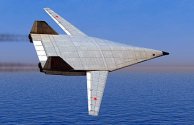I'm not a very good artist, but this drawing somewhat depicts my vision for a heavy weight J-XD proposition.
On the right, is the J-20 we all know. In the middle, is one of the tailless dorito air tunnel models we've seen under study over the years.
On the left, is my vision of a heavyweight J-XD based on that planform, scaled with the J-20 on the right. It comes to about 26m long, and a wingspan of 22m.
Most of it is self explanatory, but for sake of clarity:
- Black circle is cockpit (single pilot sized)
- Brown rectangles are for landing gear
- Green rectangles are for weapons bay -- main ventral bay and two small side bays
- Yellow curvy thingy is approximate air intake path -- starts ventrally and S ducts dorsally (think YF-23) to the engine
- red rectangle/circle is engine (I drew them as ovals in the frontal aspect picture, pretend they are circles)
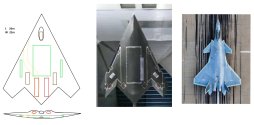
Bits of note:
- Main ventral weapons bay I envision as being sized to enable carriage of up to six VLRRAMs like PL-17s (which would not take up the full length of the bay in a 6x1 configuration), or twelve PL-15s (which would take up the full length of the bay in a 6x2 configuration). Or it can carry the equivalent number of the new BVRAAM which J-20 is designed to carry six of in place of four PL-15s, which would be eighteen "PL-Xs" (in a 9x2 configuration)
- Side/ventral bays are for a BVRAAM -- either a single PL-15 or PL-X, but in future iterations could be replaced as avionics bays or a DEW bay.
-I haven’t depicted sensors, EW and datalink antennae, but they would consist of a number of distributed arrays around the airframe but also have a traditional radome sensor as well.
-Many of the specific details and geometries are obviously omitted because I am bad at drawing
(intake geometry, specific contours, etc)
-Overall this aircraft would of course be much heavier than a J-20 and have a slightly larger total footprint, however I consider it to still be a “tactical” sized aircraft, albeit on the larger size
-Substantial internal volume for fuel, avionics, and SWAP-C for future growth
-I haven’t depicted control surfaces, but they would essentially be the same as what the wind tunnel model or the similar Lockheed RESTORE has (moving wingtips, slats, trailing edges etc), see below images
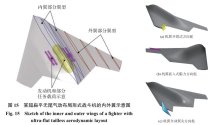
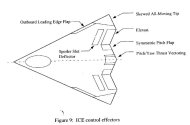
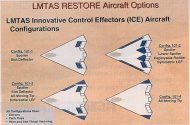
This isn’t meant to be unfalliable, more a rough depiction of what I think the priorities of a heavy weight J-XD. If the PLA does go for a heavyweight J-XD option, to be honest I think what I depicted may be a bit large – perhaps something in the 23-24m length rather than 26m length would be more plausible.
That said I do think some sort of tailless arrowhead/dorito seems like a plausible configuration to pursue. I’m open to the idea of dorsal fold down V tails that “fold” against the fuselage smooth during normal operation and “fold out” when needed like take off or landing
